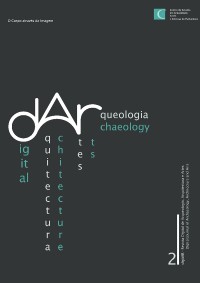Please use this identifier to cite or link to this item:
https://hdl.handle.net/10316.2/39299| Title: | Os corpos na escultura do século XVI | Authors: | Gonçalves, Carla Alexandra | Keywords: | the body through the image;anatomy in the sixteenth century;o corpo através da imagem;a anatomia no século XVI | Issue Date: | 2015 | Publisher: | Centro de Estudos em Arqueologia, Artes e Ciências do Património | Abstract: | The main theme of this workshop lies on a methodological problem: how can someone study the body in the
sculpture of the XVIth century? To answer this question, it is required to ask some other questions, in order to
select several relevant working hypotheses: a) Is there a body in the modern era? And, if we agree that there
is indeed, what kind of body is it? Is it a universal, or a European, or a Peninsular or a Portuguese kind of body?
b) During the modern era, does the body representation reflect what mankind sees, or does it reflect what
mankind wants to see? c) During the modern era, does the body representation reflect reality or utopia? Is
it a real body or is it a fictional one? d) In the sculpture of the XVIth century, what does the body tell us (i.e.,
its hands, its faces, its attitudes, its body expressions, its gestures)? e) Can it be detected some kind of artistic
manipulation of the body, as a consequence of the historical period in which its representation emerges? f)
Is sculpture a good documentary resource to assess how the body is visualized in each historical period? g)
Finally, the question that introduces these reflections is, after all, the same that may well conclude them: what
does your body tell me?para cada momento histórico? g) A pergunta que inicia este conjunto de reflexões é
a mesma que encerra este elenco geral: o que me diz o teu corpo? Estabelecemos, como objecto de trabalho para este workshop, um problema metodológico: como estudar o corpo na escultura do século XVI. Para responder a esta interrogação de cariz processual partamos de um conjunto de perguntas que abrem caminho para a determinação de hipóteses de trabalho que nos importam, e às quais tentaremos, depois desta exposição, responder: a) Haverá um corpo para a Idade Moderna? Havendo, que corpo será esse (mundial, europeu, peninsular, português)? b) A representação do corpo durante a Idade Moderna espelha o que o Homem vê, ou o que o Homem quer ver? c) A representação do corpo na Idade Moderna espelha a realidade ou a utopia? Trata-se, efectivamente, de um corpo-realidade ou de um corpo-ficção? d) O que diz o corpo (mãos, rostos, poses, expressão corporal, gestualidade) na escultura do século XVI? e) Antevê-se algum género de manipulação artística do corpo ao serviço da conjuntura epocal? f) A escultura consubstancia uma boa fonte documental para aferir sobre o que é o corpo para cada momento histórico? g) A pergunta que inicia este conjunto de reflexões é a mesma que encerra este elenco geral: o que me diz o teu corpo? |
URI: | https://hdl.handle.net/10316.2/39299 | ISSN: | 2182-844X (digital) | DOI: | 10.14195/2182-844X_2_4 | Rights: | open access |
| Appears in Collections: | digitAR: Revista Digital de Arqueologia, Arquitectura e Artes |
Files in This Item:
| File | Description | Size | Format | |
|---|---|---|---|---|
| os_corpos_na_escultura_do_seculo_xvi.pdf | 2.35 MB | Adobe PDF |  |
Items in DSpace are protected by copyright, with all rights reserved, unless otherwise indicated.
